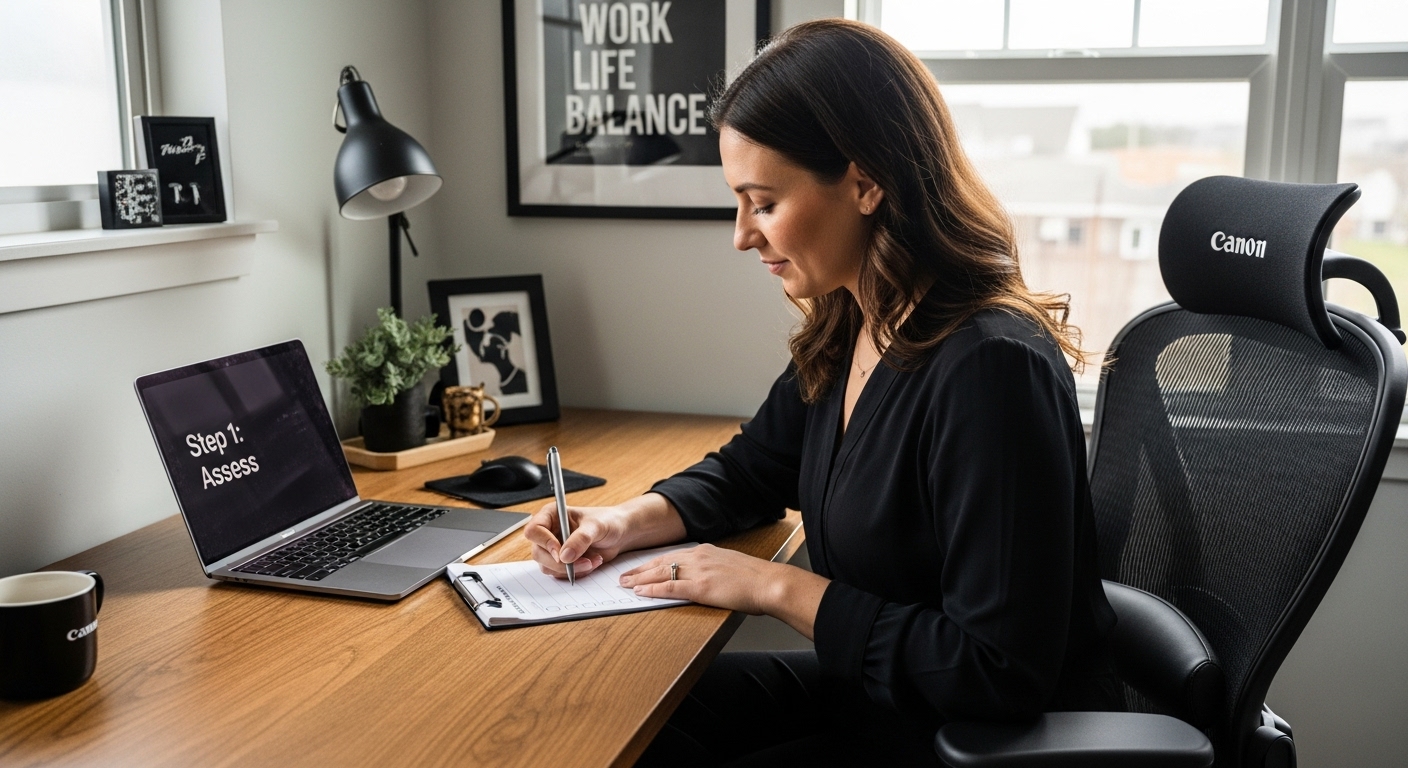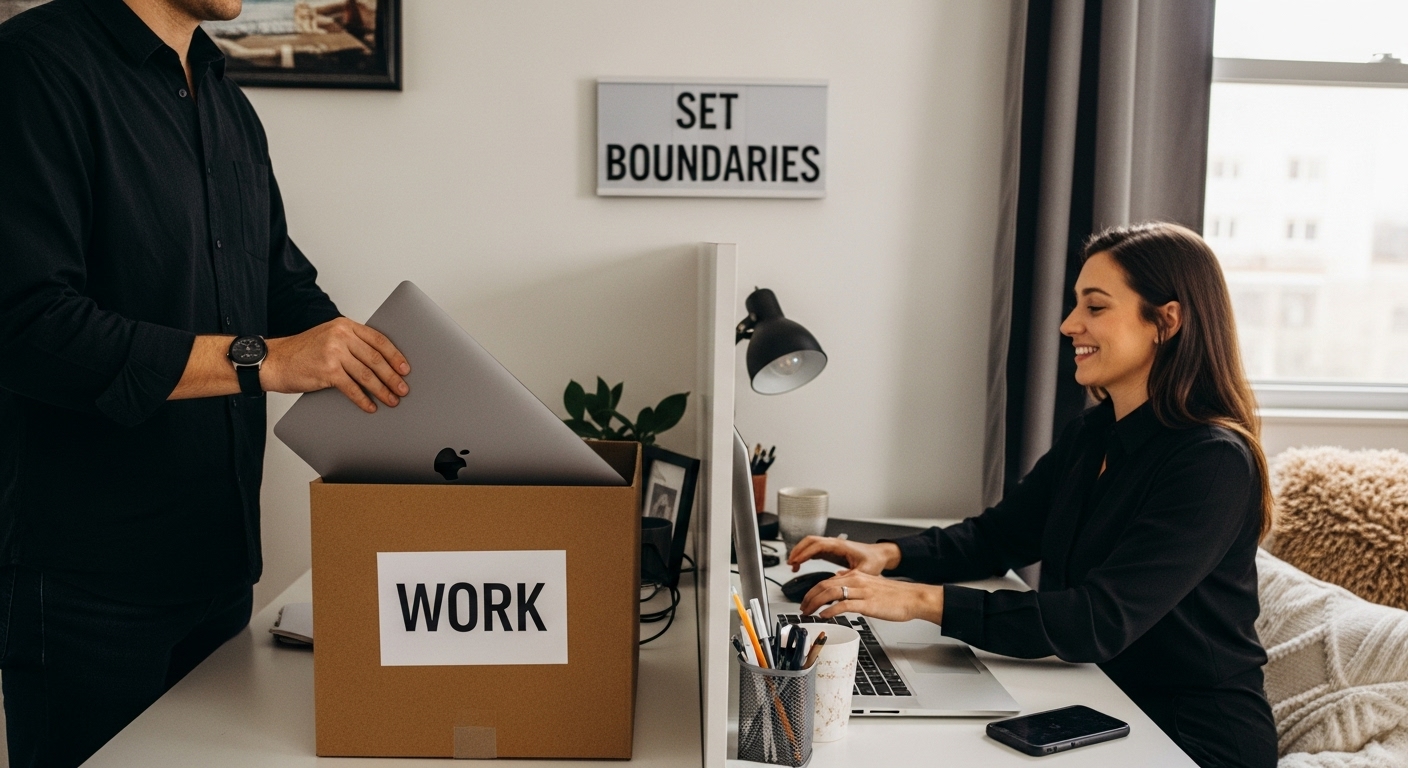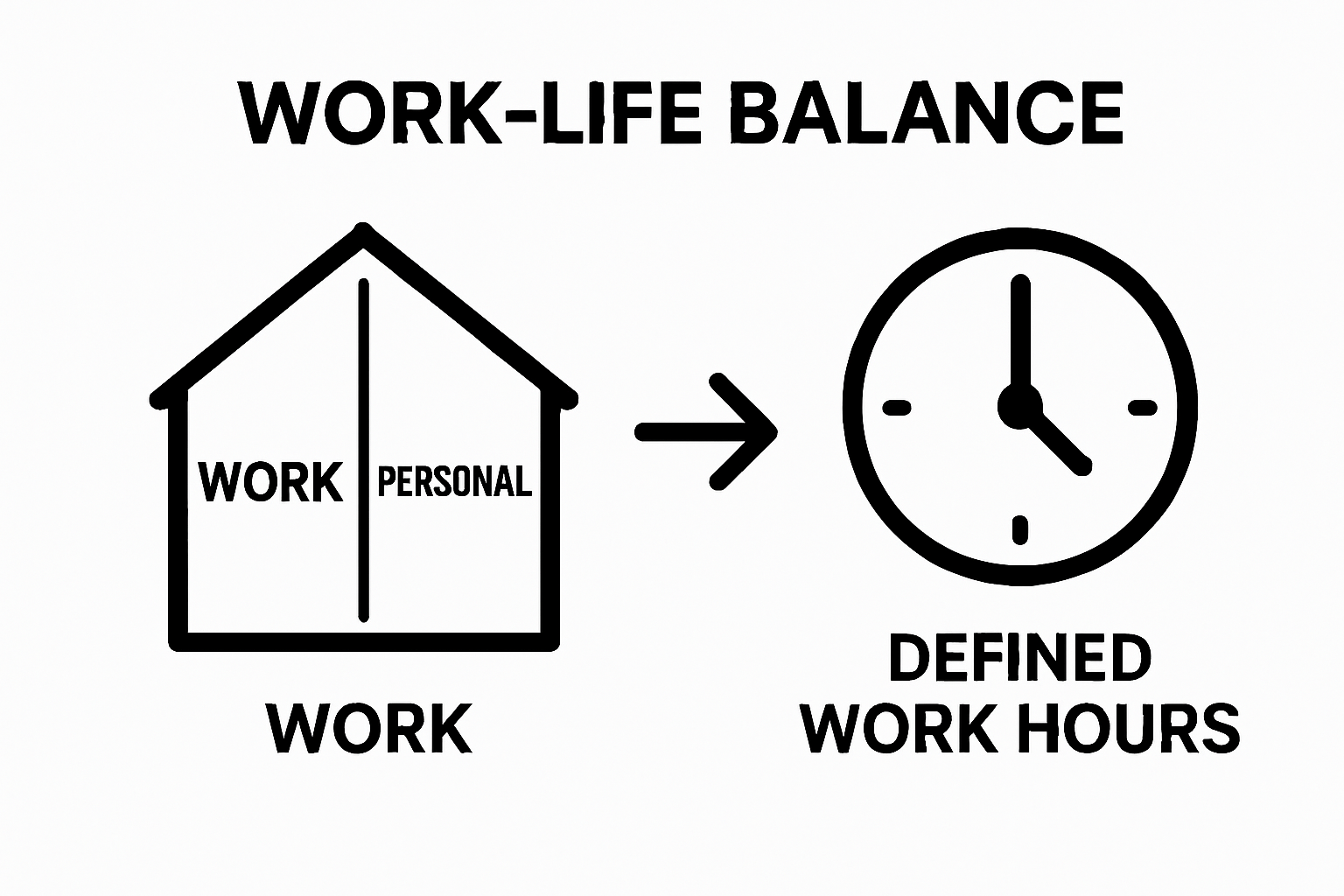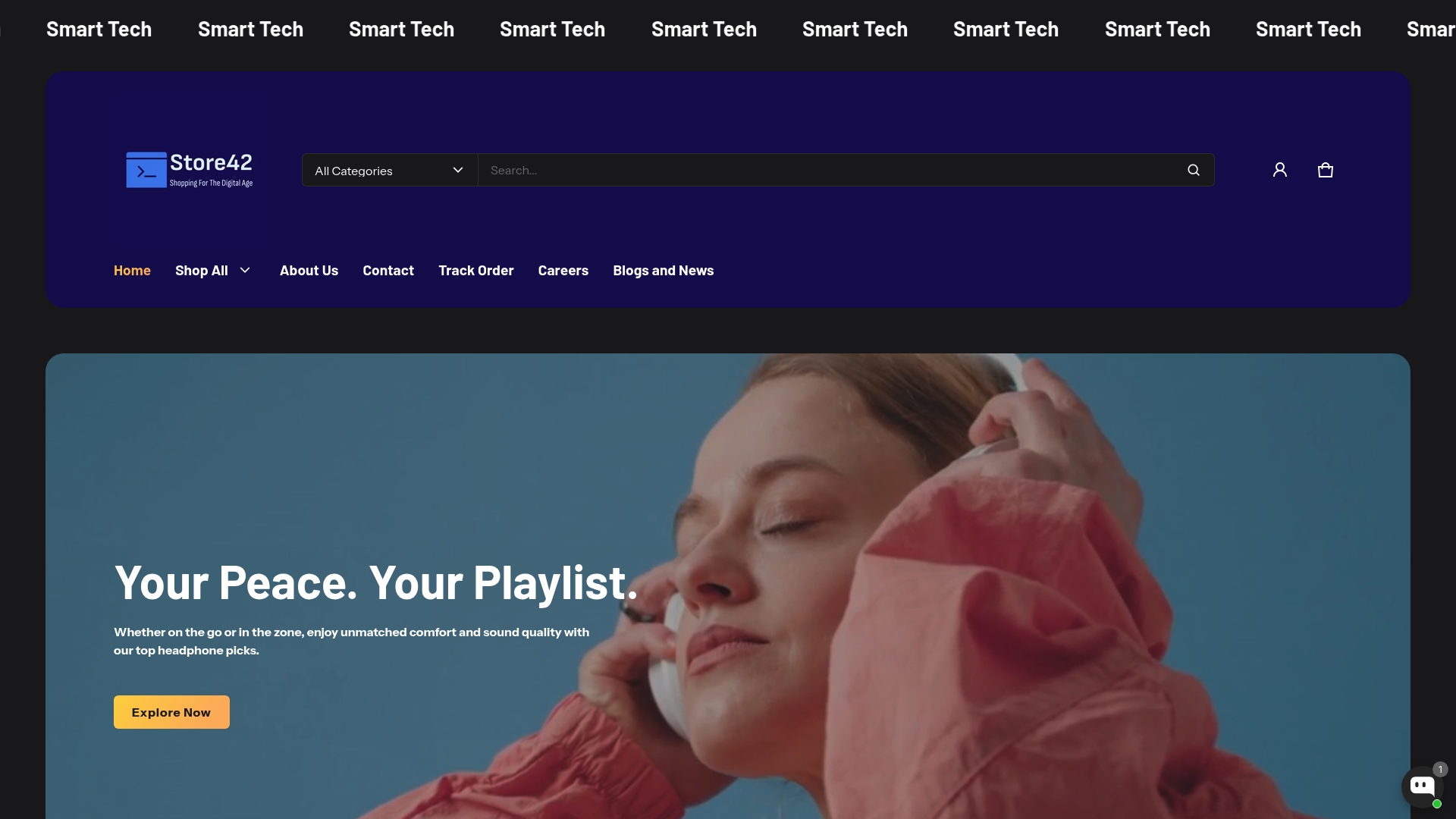
Remote work seems like the ultimate freedom, yet most people overlook what makes or breaks the experience. Tracking your daily work habits for just one week often uncovers hidden energy drains and surprise productivity peaks you never noticed. This might sound obvious, but the real breakthrough comes from seeing how tiny adjustments in your routine or workspace can spark a massive boost in both focus and well-being.
Table of Contents
- Step 1: Assess Your Current Work Environment And Habits
- Step 2: Set Clear Boundaries Between Work And Personal Life
- Step 3: Create A Structured Daily Routine
- Step 4: Implement Effective Communication Practices
- Step 5: Regularly Evaluate And Adjust Your Strategies
Quick Summary
| Key Point | Explanation |
|---|---|
| 1. Conduct a personal workspace audit | Analyze your physical setup and habits to identify productivity barriers and improve your work environment. |
| 2. Set clear work-life boundaries | Establish defined work hours and a dedicated workspace to create separation between your professional and personal life. |
| 3. Create a structured daily routine | Design a daily schedule based on your energy levels to enhance focus, productivity, and overall well-being. |
| 4. Implement effective communication practices | Establish clear communication protocols with your team to enhance clarity, build trust, and reduce misunderstandings. |
| 5. Regularly evaluate and adjust strategies | Conduct periodic self-assessments to adapt your work-life balance strategies to ongoing changes in personal and professional demands. |
Step 1: Assess Your Current Work Environment and Habits
Remote work demands strategic self-awareness. Before you can optimize your work life balance, you need a comprehensive understanding of your current professional ecosystem. This initial assessment helps identify potential friction points, productivity barriers, and personal work style nuances that impact your overall harmony.
Start by conducting an honest personal audit of your existing work setup. Map out your physical workspace, daily routines, and technological infrastructure. Consider your home office or preferred work locations. Are they conducive to focused productivity? Examine your desk ergonomics, lighting, noise levels, and digital equipment. A suboptimal environment can drain your energy and create unnecessary stress.
Track your typical workday meticulously for one week. Document your actual working hours, task switching frequency, interruption patterns, and emotional states throughout different work periods. Many remote professionals discover surprising insights about their productivity rhythms and energy management when they objectively analyze their behaviors. Pay special attention to moments when you feel most engaged versus when you experience burnout or distraction.
Learn more about workspace optimization for digital professionals who want to create intentional work environments. Understanding how your physical and digital spaces interact can dramatically improve your remote work experience.
Critical assessment areas include:
- Personal energy management cycles
- Technology and communication tool effectiveness
- Boundary maintenance between professional and personal spaces
- Current stress levels and potential resolution strategies
Remember that this assessment is not about judgment but understanding. Your goal is to create a baseline that allows for meaningful, incremental improvements in how you approach remote work. By developing keen self-awareness, you transform potential challenges into opportunities for personalized productivity and well-being.
Successful completion of this step means you have a clear, objective snapshot of your current work life balance landscape. You should feel empowered with insights that will drive meaningful change in subsequent steps of your optimization journey.
Below is a checklist you can use to evaluate your current remote work environment and habits, helping you quickly spot areas that may need improvement.
| Evaluation Area | What to Check | Signs of Improvement |
|---|---|---|
| Personal Energy Cycles | Track your focus and fatigue throughout the day | Clear periods of high focus and effective task completion |
| Workspace Quality | Assess desk ergonomics, lighting, noise, and equipment | Comfortable, distraction-free setup promoting sustained attention |
| Technology Effectiveness | Review devices, apps, and communication tools | Efficient, reliable tech with minimal disruptions |
| Work/Personal Boundaries | Evaluate separation of spaces and times | Distinct transition between work and leisure |
| Stress Levels | Monitor feelings during transitions and busy periods | Noticeable reduction in stress and burnout |
| Routine Consistency | Analyze how structured your workday feels | Regular start/end times and smooth daily transitions |
| Interruption Patterns | Note frequency and type of distractions | Decrease in unexpected interruptions or task switching |
Step 2: Set Clear Boundaries Between Work and Personal Life
Establishing clear boundaries is the cornerstone of sustainable remote work. Without deliberate separation, your professional and personal worlds can blur, leading to chronic stress and reduced productivity. The goal is to create a structured approach that respects both your work responsibilities and personal well-being.
Start by defining explicit work hours that align with your most productive energy cycles. This doesn’t mean rigidly adhering to a 9-to-5 schedule, but rather creating a consistent routine that signals to your brain when work begins and ends. Use digital tools like calendar blocking and automatic email responders to communicate your availability. Consider setting up separate communication channels for work and personal interactions. For instance, use a dedicated work phone number or create distinct email accounts that help you mentally compartmentalize different aspects of your life.
Explore digital nomad workflow strategies to further refine your boundary-setting techniques. Understanding how successful remote professionals manage their time can provide valuable insights into creating your own effective system.
Physical boundaries are equally crucial. Designate a specific workspace that can be completely shut down at the end of your workday. This might mean having a dedicated home office, a particular desk area, or even using a room divider to create a clear visual separation. When your work hours conclude, physically close your laptop, put away work materials, and symbolically transition out of “work mode”. This ritual helps your mind reset and prevents work from continuously bleeding into personal time.

Key boundary-setting strategies include:
- Creating a consistent daily routine
- Using technology to manage work communications
- Establishing physical workspace separation
- Communicating your availability to colleagues and family
Recognize that boundary setting is an ongoing process. You’ll need to regularly reassess and adjust your approach as your work and personal life evolve. Some days will be more challenging than others, and that’s perfectly normal. The important thing is maintaining intentionality and being kind to yourself during the process.

Successful boundary implementation means you can fully engage in work during professional hours and completely disconnect during personal time. You’ll know you’ve achieved this when you feel a genuine sense of presence both in your work and personal activities, without constant mental overlap or guilt.
Use this table to compare methods for creating and maintaining boundaries between your work and personal life in a remote environment.
| Boundary Method | Description | Tools/Actions | Benefit |
|---|---|---|---|
| Defined Work Hours | Set consistent start/end times based on energy peaks | Calendar blocking, auto-responders | Predictable schedule, easier focus |
| Workspace Separation | Use a space reserved for work only | Dedicated desk/office, room divider | Mental shift into/out of work mode |
| Separate Communication Channels | Maintain distinct lines for work vs. personal | Work phone, separate email accounts | Better compartmentalization |
| Ritual Transitions | Symbolically end workday with a routine | Close laptop, put away work items | Promotes disengagement from work |
| Communicate Availability | Inform colleagues/family when you are working | Status updates, shared calendars | Reduces interruptions |
Step 3: Create a Structured Daily Routine
A well-designed daily routine transforms chaos into predictability, providing the foundation for exceptional remote work performance. Structured routines are not about rigid schedules, but about creating intentional frameworks that support your productivity and personal well-being. Think of your routine as a personalized operating system that optimizes your energy, focus, and overall work-life harmony.
Begin by understanding your natural energy cycles. Most people experience peak productivity during specific times of the day. Some are morning powerhouses, while others hit their stride in the afternoon or evening. Map out your personal energy graph by tracking your concentration levels and task completion efficiency over several weeks. This self-awareness allows you to strategically schedule your most complex work during high-energy periods and reserve lower-intensity tasks for times when your mental stamina naturally dips.
Explore our digital nomad workflow guide for additional strategies in designing a personalized work routine that adapts to your unique lifestyle. Understanding how successful remote professionals structure their days can provide valuable insights into creating your own effective system.
Design your routine with intentional transitions that signal shifts between work and personal time. This might include a morning ritual like meditation, journaling, or light exercise before starting work. Similarly, create an end-of-day shutdown sequence that helps your brain disconnect from professional responsibilities. These bookend activities serve as psychological triggers that help you mentally enter and exit work mode.
Essential routine components to consider:
- Morning preparation and mental priming
- Prioritized task scheduling
- Regular breaks and movement intervals
- Evening wind-down and reflection
Remember that flexibility is key. Your routine should be a supportive framework, not a restrictive prison. Some days will naturally deviate from your plan, and that’s perfectly acceptable. The goal is to have a baseline structure that you can adaptively modify based on unexpected challenges or opportunities.
You’ll know your routine is effective when you experience a sense of flow and reduced decision fatigue. Your days should feel purposeful, with clear momentum and minimal stress about what comes next. A successful routine transforms work from a series of random tasks into a meaningful, manageable journey that supports both your professional objectives and personal well-being.
The table below summarizes essential daily routine components and their impact on work-life balance when working remotely.
| Routine Component | Purpose | Example Activities | Positive Outcome |
|---|---|---|---|
| Morning Preparation | Transition into work mode | Meditation, exercise, journaling | Focused start, energy boost |
| Prioritized Task Scheduling | Align tasks with energy peaks | Tackle high-focus work in mornings | Increased productivity |
| Regular Breaks | Sustain attention and health | Walks, stretching, snacks | Reduced fatigue |
| Transition Rituals | Signal end of work | Shutdown routine, reflect on day | Easier disengagement |
| Evening Wind-Down | Shift fully to personal time | Hobbies, family, relaxation | Improved well-being |
Step 4: Implement Effective Communication Practices
Mastering communication in a remote work environment is critical for maintaining professional relationships, productivity, and work-life balance. Effective communication goes beyond simply exchanging messages it’s about creating clarity, building trust, and preventing misunderstandings that can lead to unnecessary stress.
Begin by establishing clear communication protocols with your team and stakeholders. This means defining preferred communication channels for different types of interactions. Urgent matters might require immediate messaging, while complex discussions could be better suited to video calls. Create a shared understanding of response time expectations, communication etiquette, and the appropriate use of various communication tools. For instance, reserve email for formal documentation, use instant messaging for quick questions, and schedule video calls for in-depth discussions or team collaborations.
Explore our guide on digital nomad workflow strategies to understand how successful remote professionals maintain seamless communication across different time zones and work environments. Learning from experienced remote workers can help you refine your communication approach.
Develop a personal communication strategy that balances professional availability with personal boundaries. This might involve setting specific hours for real-time communication, using status indicators in messaging apps, or creating automated responses that manage expectations about your availability. Be transparent about your working hours and communication preferences, but also remain flexible and responsive when genuine needs arise.
Key communication practice principles include:
- Establishing clear communication channel guidelines
- Setting realistic response time expectations
- Using appropriate tools for different communication needs
- Practicing active listening and clear, concise messaging
Remember that over-communication is often better than under-communication in remote work settings. Proactively share updates, ask clarifying questions, and provide context to prevent misunderstandings. However, be mindful of communication fatigue. Not every interaction needs to be a lengthy conversation, and sometimes a quick, direct message can be more effective than a prolonged discussion.
You’ll know you’ve successfully implemented effective communication practices when you experience reduced workplace misunderstandings, feel more connected to your team, and can seamlessly transition between work interactions and personal time without feeling constantly on call. The ultimate goal is to create a communication approach that supports your productivity while protecting your personal space and mental well-being.
This troubleshooting table outlines common remote work challenges related to work-life balance, their causes, and potential solutions as discussed in the guide.
| Problem | Possible Cause | Solution from Guide |
|---|---|---|
| Feeling constantly on call | Lack of clear boundaries or availability communication | Set work hours, use status indicators, communicate availability |
| Frequent interruptions | Poor workspace separation or no communicated boundaries | Create dedicated workspace, inform others of work times |
| Declining productivity | Misaligned tasks with energy cycles or unstructured routine | Track energy, schedule key tasks at peak times |
| Increased stress/burnout | Blurred work/personal line, lack of routine | Ritual transitions, define shutdown routines |
| Communication misunderstandings | Undefined channels or response expectations | Set communication protocols, clarify tool usage |
Step 5: Regularly Evaluate and Adjust Your Strategies
Work-life balance is not a destination but a continuous journey of refinement and self-discovery. Creating sustainable remote work practices requires ongoing assessment, flexibility, and a willingness to experiment with new approaches. Think of your work-life balance strategy as a living system that evolves alongside your personal and professional growth.
Implement a structured self-assessment process by scheduling monthly or quarterly review sessions with yourself. During these dedicated reflection periods, critically examine the effectiveness of your current work-life balance strategies. Use a combination of quantitative metrics and qualitative observations. Track indicators like productivity levels, stress measurements, sleep quality, personal satisfaction, and time allocation across work and personal domains. Consider keeping a detailed journal or using digital tracking tools that help you visualize your progress and identify patterns that might not be immediately apparent.
Explore our digital nomad workflow guide to gain insights into adaptive strategies used by successful remote professionals. Learning from experienced practitioners can provide valuable perspectives on maintaining flexibility in your approach.
During your evaluation, be brutally honest with yourself about what’s working and what isn’t. Recognize that strategies that served you well six months ago might no longer be effective. Professional roles change, personal circumstances shift, and your energy dynamics are not static. Be prepared to make bold adjustments. This might mean completely redesigning your daily routine, exploring new productivity techniques, or investing in tools that support your evolving work style.
Key evaluation and adjustment principles include:
- Conducting regular, structured self-assessment sessions
- Tracking both quantitative and qualitative work-life balance indicators
- Remaining open to significant strategy modifications
- Practicing self-compassion during transition periods
Understand that adjustment is not a sign of failure but a testament to your commitment to personal growth. Some experiments will succeed brilliantly, while others might fall short. Each iteration brings you closer to a more personalized, sustainable approach to remote work. The most successful remote professionals view their work-life balance strategy as a dynamic, iterative process of continuous improvement.
You’ll know you’ve mastered this step when you feel a sense of agency and control over your work-life integration. Your strategies will feel less like rigid rules and more like intuitive, flexible guidelines that support your unique professional and personal aspirations. The ultimate goal is creating a work environment that energizes rather than depletes you.
Elevate Your Remote Routine with Tools Built for Work-Life Harmony
Struggling to maintain clear boundaries and structure in your remote workday is common, especially when your workspace starts blending into your personal life. If distractions, clutter, or lack of reliable equipment are holding you back from finding the balance you read about, you are not alone. That is where Store 42 steps in: effortlessly bridge the gap between intention and execution with innovative, travel-ready tech and apparel built for digital nomads and remote creators.

Give your routine an instant upgrade. Create a focused workspace anywhere with portable chargers, minimalist keyboards, and noise-canceling headphones designed for movement and high performance. Seamlessly shift from a power work session to a personal reset with wrinkle-resistant shirts and all-day sneakers that keep up with your schedule. Ready to feel more in control of your environment and energy? Visit Store 42 for handpicked solutions that empower you to streamline your setup and reclaim your balance. Take action today to make every day your most productive and harmonious yet.
Frequently Asked Questions
How can I assess my current work environment for better productivity?
Begin by conducting a personal audit of your workspace, daily routines, and technology usage. Track your workday for one week to identify productivity patterns, interruptions, and emotional states to understand areas that can be improved.
What are effective strategies for setting boundaries between work and personal life?
Establish clear work hours aligned with your most productive times, create physical separation of your workspace, and use tools like calendar blocking and automated responses to communicate your availability effectively.
How can I create a structured daily routine while working remotely?
Identify your natural energy cycles and schedule high-intensity tasks during your peak times. Include intentional transitions for starting and ending work, along with regular breaks to maintain focus and reduce stress.
How often should I evaluate my work-life balance strategies?
Conduct monthly or quarterly self-assessment sessions to review the effectiveness of your strategies. Use a combination of productivity metrics and personal reflections to identify areas for improvement and make necessary adjustments.

